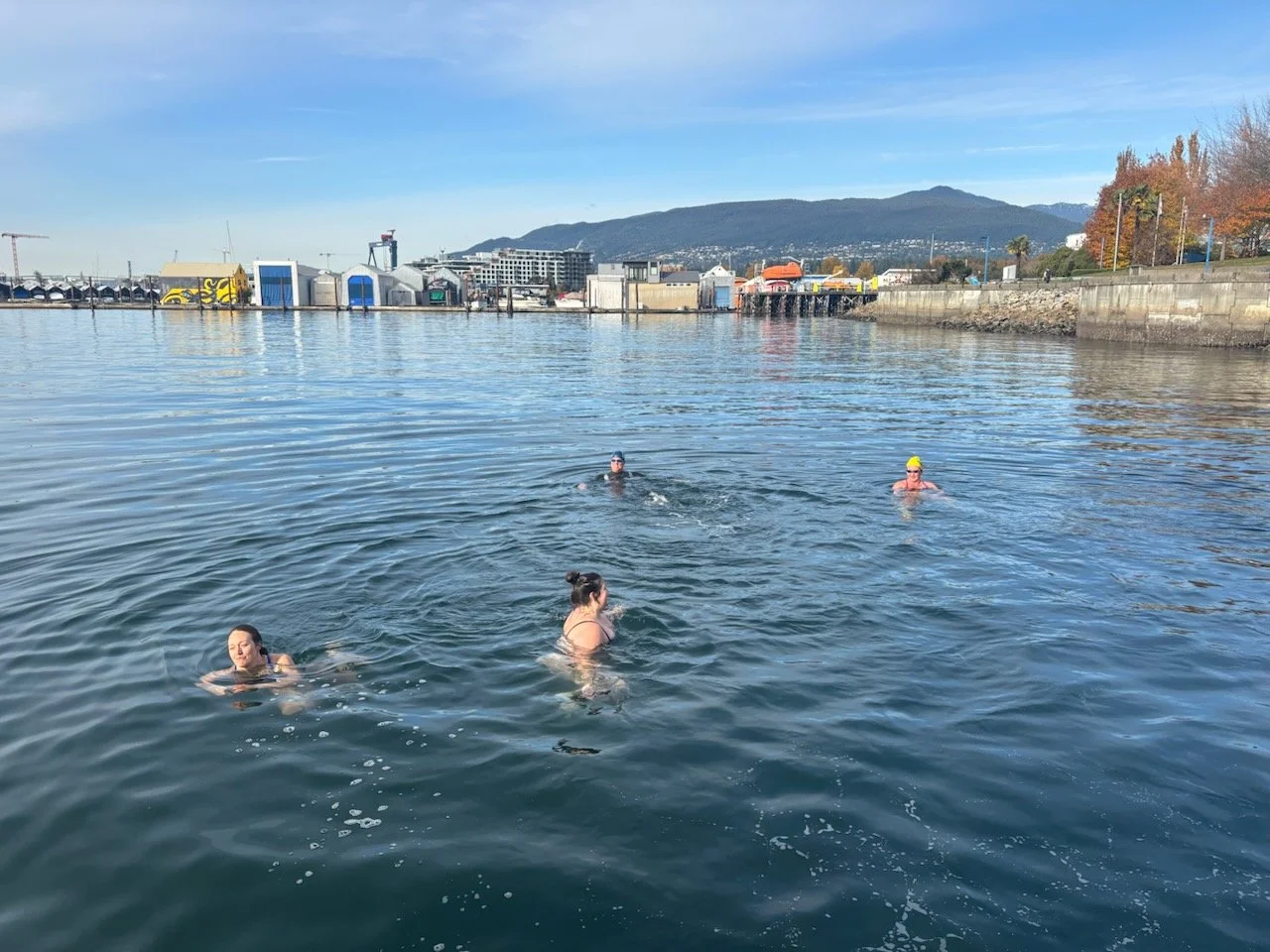Mark Mattson: 11-07-2025
Swimmers at Waterfront Park, November 3rd, 2025
From Bald Eagles to Swimmers: A New Vision for Vancouver’s Waterfront
Every time I visit Vancouver, I look for bald eagles perched in the tall fir trees. For me, they’ve always been a sign—a kind of social proof—that I’m in a city blessed with fresh air, clean water, and thriving wildlife.
But this week, something shifted. I was in Vancouver to announce two transformative projects: the North Vancouver Harbour Deck and the Wave Prize, supported by the Weston family. These initiatives will redefine what I look for when I return to British Columbia.
Soon, my sign of a healthy city won’t just be eagles in the sky—it will be people in the water.
Why Swimmers Matter
Swimmers are more than leisure seekers. They’re indicators of how well a city is living up to its environmental values. When people return to the water, it signals something powerful:
Nature is recovering. The ecosystem can once again sustain life, from plankton to herons.
People have confidence. Communities trust the water enough to touch, feel, and immerse themselves in it.
Swimming unites two worlds—nature and people. It’s living proof that renewal is possible, and that clean water benefits every species that depends on it.
What Recovery Looks Like
For generations, Burrard Inlet symbolized industry and pollution. Now, it’s becoming a symbol of environmental progress.
Projects like the Harbour Deck and the Wave Prize aren’t just infrastructure. They’re visible milestones on a long journey of restoration. Each swimmer who steps into the inlet represents decades of community effort—scientists testing, Nations stewarding, and citizens believing this water could once again be clean enough to swim in.
That act—swimming—isn’t risky. It’s restorative. It shows that stewardship works.
Swimming and the Global Movement for Clean Water
What’s happening here in Vancouver is part of something much bigger. Around the world, communities are rediscovering the power of swimmable water—not just as recreation, but as a measure of how healthy, safe, and sustainable their cities have become.
When people can swim safely where they live, it means they’ve met some of the toughest goals humanity has set for itself:
Access to clean water and sanitation (that’s UN Goal 6).
Building sustainable, resilient communities (Goal 11).
Protecting life in our waterways (Goal 14).
Even Canada’s own sustainability framework recognizes swimmable, drinkable, fishable water as a national environmental indicator.
So when you see someone swimming in Burrard Inlet, it’s not just a local moment—it’s global progress you can see with your own eyes. It’s Vancouver living up to the same international commitments we’ve all signed onto. It’s evidence that change is possible.
Proof in the Water
At the proposed Waterfront Park site, water quality now surpasses Blue Flag standards for excellence—a remarkable leap from what many remember only a decade ago.
That’s not just cleaner water. It’s a collective achievement—proof that collaboration among communities, governments, and Indigenous partners can restore even the most urbanized waterways.
The Future We’re Building
Imagine this: bald eagles circling overhead while people swim freely below, surrounded by the life and vitality of a thriving harbour. A waterfront once defined by industry is now defined by life.
That’s the Vancouver we’re building—one where nature and people both belong, and where the measure of progress is as simple, and as profound, as being able to dive in.

